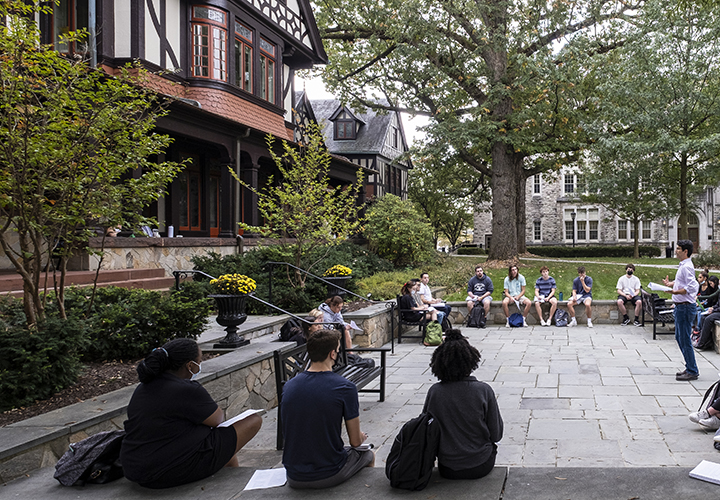Loyola receives high rankings from PayScale in its annual College Salary Report

Loyola University Maryland ranks in the top 7% nationally for highest mid-career salary potential of graduates in PayScale’s 2021 College Salary Report, which considers the best colleges and universities for a bachelor’s degree based on which schools produce the highest-paid graduates.
A median mid-career (more than 10 years of experience) salary of $125,800 earned Loyola a No. 95 ranking of more than 1,500 private and public colleges and universities across the country.
“Loyola’s distinctive Jesuit, liberal arts education prepares students with the depth of knowledge and human skills they need to achieve personal and professional success,” said Amanda M. Thomas, Ph.D., interim president. “We are proud that our students do not have to choose between focused, effective career preparation and the profound life-long benefits of a liberal arts education. They graduate ready for achievement, the new world of work, and a balanced, flourishing, and purposeful life.”
Loyola has ranked among the top echelon of PayScale’s College Salary Report for the past five years—moving up each year, from 12% in 2017, to our current standing.
Loyola placed 75 out of 965 private colleges and universities based on the salary potential of alumni holding bachelor’s degrees; when expanded to include graduates who also hold master’s and doctoral degrees, Loyola ranks in the top 9% nationally.
Loyola is No. 2 among the 27 colleges in Maryland to make PayScale’s 2021-22 list—second only to the United States Naval Academy—for salary potential. Loyola further ranked No. 13 among 570 schools with a religious affiliation and No. 44 among PayScale’s 349 Best Colleges for Sports Fans, or “sports schools” that produce the highest-earning alumni.
PayScale’s College Salary Report considers the alumni salary data of 3.2 million respondents who work in the United States from more than 4,000 universities across the country to predict earnings of future graduates based on degrees, majors, and careers. For more information, view the full report.